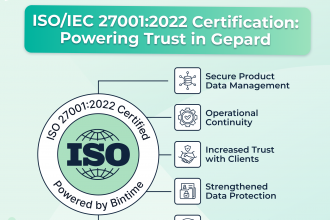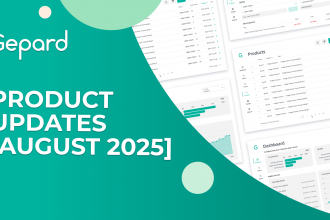What Is eCommerce KPI?
eCommerce Key Performance Indicators (KPIs) are measurable metrics that businesses use to track and evaluate the performance of their online stores or digital commerce operations.
These KPIs provide insights into various aspects of an eCommerce business, such as sales performance, customer engagement, conversion rates, customer acquisition costs, average order value, customer lifetime value, website traffic, and fulfillment efficiency. By monitoring and analyzing these KPIs, businesses can identify strengths and weaknesses, make data-driven decisions, optimize their strategies, and drive growth in their online sales and operations.
eCommerce KPI Examples
Here are some eCommerce KPI examples commonly used in different industries:
- Conversion Rate. It indicates the effectiveness of your website and marketing strategies in turning visitors into customers.
- Average Order Value (AOV). A higher AOV suggests that customers are purchasing more or higher-priced items, which can contribute to increased revenue.
- Customer Acquisition Cost (CAC). It helps assess the effectiveness and efficiency of your marketing and advertising efforts.
- Customer Lifetime Value (CLV). A higher CLV indicates the long-term value of acquiring and retaining customers.
- Cart Abandonment Rate. A high abandonment rate may signal potential issues in the checkout process or barriers to conversion.
- Return on Ad Spend (ROAS). It helps evaluate the effectiveness of your advertising investments.
- Website Traffic. Tracking website traffic allows you to assess the reach and effectiveness of your marketing initiatives.
- Customer Retention Rate. A high retention rate indicates customer loyalty and the success of your retention efforts.
- Inventory Turnover. It helps manage inventory levels, minimize stock outs, and optimize cash flow.
- Fulfillment and Shipping Efficiency. These metrics reflect the effectiveness of your logistics and order-processing operations.
Remember, the specific key performance indicators that matter most to your eCommerce business may vary based on your industry, business model, and objectives. It’s important to identify the KPIs most relevant to your goals and regularly track and analyze them to drive improvements and make informed business decisions.
Most Important KPI for eCommerce Business
One of the most significant KPIs for eCommerce is the Conversion Rate. A high conversion rate indicates that your website and marketing efforts are effectively converting visitors into customers. By tracking and optimizing the conversion rate, you can identify areas for improvement in your website design, user experience, product offerings, and marketing strategies. Improving the conversion rate can have a direct impact on your sales and revenue, making it a crucial KPI for eCommerce business success.
Another vital key performance indicator for eCommerce is Customer Lifetime Value (CLV). Understanding and maximizing CLV is crucial for long-term profitability. By focusing on customer retention, upselling, cross-selling, and providing exceptional customer experiences, you can increase the value and loyalty of your customer base.
Monitoring and optimizing CLV helps you make strategic decisions on customer acquisition costs, retention initiatives, and personalized marketing efforts to maximize the long-term value of your customers and drive sustainable growth in your eCommerce business.
How To Spot The Important eCommerce KPIs For Your Business
Identifying the important eCommerce key performance indicators for your business requires a thoughtful approach. Here are steps to help you spot the KPIs that matter most to your eCommerce operations:
Step #1: Define your business goals
Begin by clearly defining your business objectives. Are you aiming to increase sales, improve customer retention, boost website traffic, or optimize operational efficiency? Understanding your goals will guide you in identifying relevant KPI in eCommerce.
Step #2: Align KPIs with objectives
Match your business objectives with specific key performance indicators that directly measure progress towards those goals. For example, if your objective is to increase customer retention, relevant KPI in eCommerce may include customer retention rate or repeat purchase rate. Ensure that the selected KPIs align with your unique business needs and priorities.
Step #3: Review eCommerce KPI benchmarks
Research eCommerce KPI benchmarks and standards to gain insights into commonly tracked KPIs in your sector. This can provide a starting point for identifying KPIs that are relevant and impactful for your eCommerce business.
Step #4: Analyze customer journey
Understand your customer journey and identify key touchpoints where customer behavior can impact your business goals. Focus on KPIs that align with those touchpoints, such as conversion rate, average order value, or cart abandonment rate.
Step #4: Leverage data analytics
Utilize data analytics tools to analyze and interpret relevant data. Look for patterns, trends, and correlations that shed light on important performance indicators. Dive into metrics like website traffic, customer behavior, sales, and customer feedback to uncover insights.
Step #5: Continuously evaluate and refine
Regularly review and reassess your chosen key performance indicators based on the evolving needs of your eCommerce business. Monitor their performance and make adjustments as necessary to ensure they remain aligned with your objectives.
How Often To Check eCommerce KPIs
Checking eCommerce KPIs should be done on a regular basis to stay informed about the performance of your online business. The frequency of monitoring can depend on various factors, including the size of your business, the pace of operations, and the volatility of the industry. In general, it is recommended to review eCommerce KPIs at least monthly to track progress, identify trends, and make data-driven decisions.
However, in more dynamic or rapidly changing environments, weekly or even daily monitoring may be necessary. The key is to establish a routine that allows you to capture relevant data consistently and respond promptly to any deviations or opportunities for improvement. Regularly checking your eCommerce KPIs enables you to stay proactive, make timely adjustments, and optimize your strategies for sustained success.

